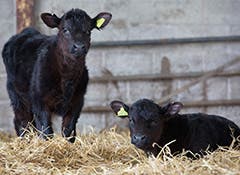Treating liver fluke in cattle
When treating liver fluke in cattle it is important to select a product that will kill the stages of liver fluke that we expect to be in the animal at that time. Stages of liver fluke present at any given time will vary from farm to farm and year to year, so a fixed time treatment protocol is unlikely to give reliably effective results. Different active ingredients are needed at different times of year to target the different stages of fluke that will be present in the animals (see table below). To target these treatments effectively, we need to know when the fluke challenge starts in any field or farm.
Pasture risk refers to the risk of animals being infected with fluke and the stated months are for guidance only as these timings will vary considerably from year to year.
There are many approaches to managing liver fluke on-farm and working with your RAMA or Vet to implement a parasite management plan following the principles discussed here will help reduce the economic and production losses associated with liver fluke.
When to treat for liver fluke again
As treatments for liver fluke are not long acting, they will only remove the target age range of liver fluke that are present at the time of treatment. Follow up treatments will be necessary if animals continue to graze known fluke risk pasture. However, this should be targeted on evidence of infection.
Post treatment checks
As even a few liver fluke can have a significant impact on the performance of livestock, it is always worth checking that any treatment for fluke has been effective. This can be done using the coproantigen test or composite fluke egg counts following advice from your herd health advisor.

Fasinex™ 240, 240 mg/ml Oral Suspension for Cattle
Fasinex 240 controls all stages of liver fluke in cattle.

Liver fluke in cattle
Find out why liver fluke in cattle is a growing threat, management strategies and treatment options.

Managing worms in cattle
Worm burdens can cause productivity losses and affect growth rates in youngstock.
- Mazeri et al, Nature Scientific Reports, 7: 7319, 2017



